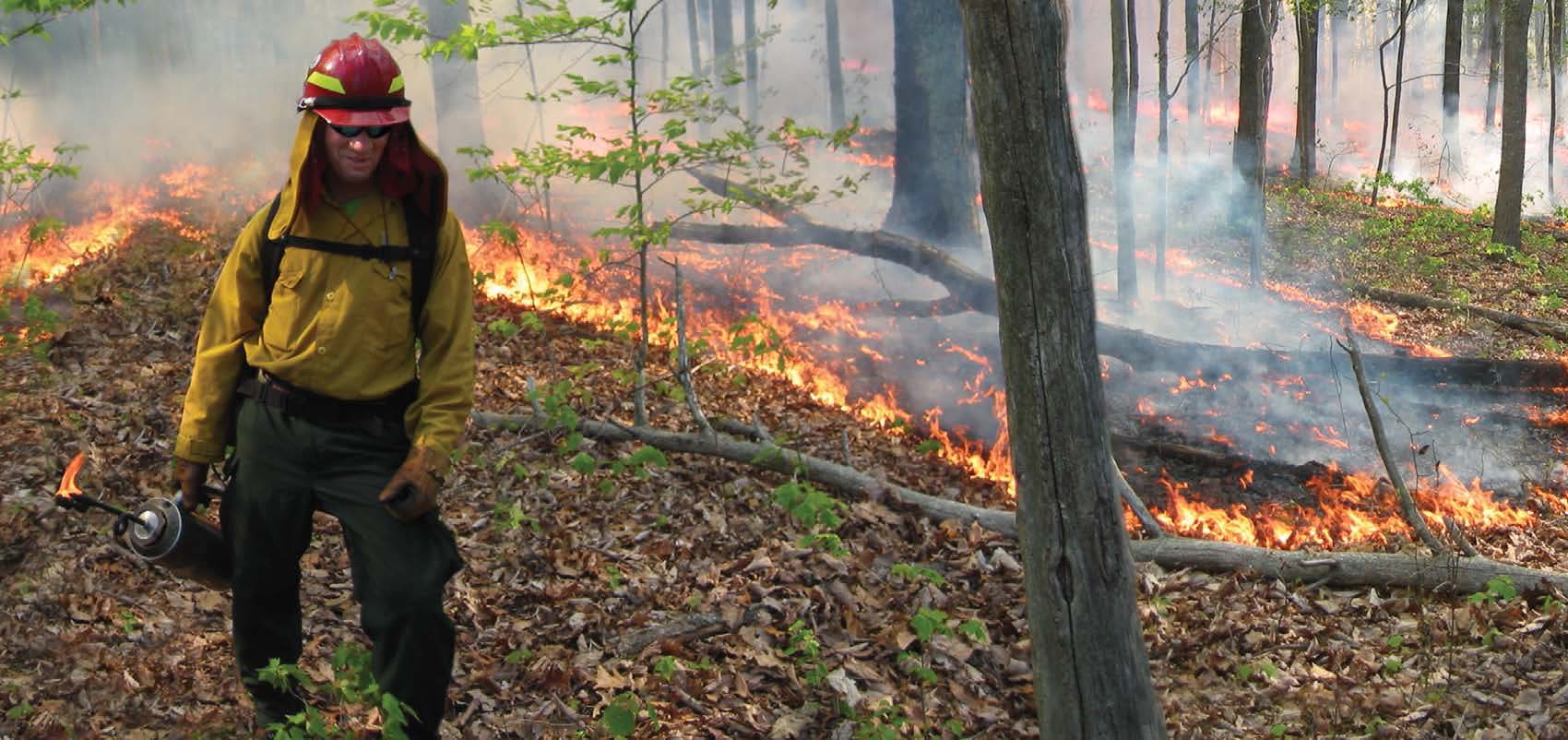Prescribed fires encourage new growth and reduce the risk of wildfires by intentionally burning underbrush and old wood. Foresters would like to extend the timeframe that they safely can implement prescribed fires in habitats of the endangered Indiana bat
Do no harm. In the effort to manage the forest habitats of the endangered Indiana bat, naturalists must always, always, first consider the impact on this nocturnal mammal. Bats perform a vital ecological role, feeding entirely on flying insects; a single bat can consume thousands of mosquitoes each night.
Summering in forests throughout the Eastern United States, female Indiana bats raise their young in maternity colonies. While their first choice for nurseries are dead trees with exfoliating bark, they also live in large, healthy trees such as shag hickory and oaks. Their male bats are singular creatures that choose colder microclimates; they commonly enter torpor, a hibernation-esque state, during cool or rainy days.
Ironically, one of the most effective ways to keep their ecosystem healthy could be lethal. If conducted improperly, prescribed fires — the technique of burning underbrush and old wood to encourage new growth and reduce the risk of wildfires and insect outbreak — could kill or injure both male bats in torpor and flightless young too heavy for their mothers to move.
Consequently, naturalists err on the side of caution; they implement prescribed fires in known habitats of the Indiana bat only during winter months, when the bats are hibernating safely deep inside caves.
A multidisciplinary research project involving the U.S. Department of Agriculture’s Joint Fire Science Program, Ohio University, University of Kentucky, Rochester Institute of Technology and several independent consultants is focusing on the potential effects of extending the burning season. The impetus for their efforts comes from Kentucky’s Daniel Boone National Forest, where foresters would like to implement an aggressive prescribed burning program to restore and maintain oak and hickory groves and prepare for an expected invasion of gypsy moths.
Using Fire Dynamics Simulator, a version of computational fluid dynamics software, Valerie Young, Ph.D., a chemical engineer at Ohio University, is simulating how plumes of hot gases rise above the flames and mix into the roosting crevices of tree bark. She’s running the data-intensive programs on the Ohio Supercomputer Center’s IBM Cluster 1350.
“We suspect that the bark crevices may actually shelter bats from the fire’s deadly carbon monoxide, smoke and heat,” Young said. “Computational models of this kind have been used to study wildfires out West, over thousands of acres and days or weeks. As far as we can find, this is the first work that looks at the impact of fires on mammals on a microscale.”
The models will help the team understand the mix of gas concentrations and temperatures for two scenarios. The first looks at the environment immediately above an active fire, when the intensity is brief, but the concentrations of smoke and heat are high. The second scenario models the low concentration of lingering smoke after the fires have subsided or been extinguished during nighttime inversions, which is when temperatures increase at higher elevations. This information will then be used to determine rates of gas and heat mixing into these crevices.
“With a better understanding of the effect of heat and smoke exposure on roosting Indiana bats, we can make better recommendations on what time of day and time of year to implement prescribed burns,” said Anthony Bova, a physical scientist with the U.S. Department of Agriculture’s Forest Service working on the project. “Fire obviously creates an immediate impact on the environment. We want to minimize the short term negative effects, and maximize the long term benefits.”
“Our goal is to determine if the foresters can expand the range of time for implementing prescribed burns, without harming the endangered Indiana bat,” Young added. Or, in essence, do no harm.
--
Project leads: Matthew Dickinson, Ph.D., U.S. Department of Agriculture Forest Service; James Norris, Ph.D., Norris Consulting Services; Michael Lacki, Ph.D., University of Kentucky; & Valerie Young, Ph.D., Ohio University
Research title: Injury & mortality risks from wildland fire smoke & heat exposures for endangered Indiana bats (Myotis sodalis) in maternity roosts
Funding source: U.S. Department of Agriculture, Joint Fire Science Program
